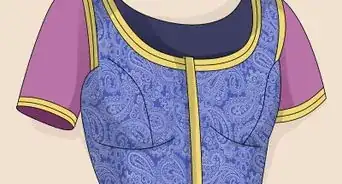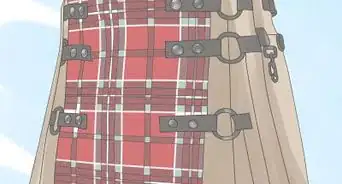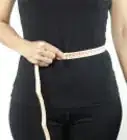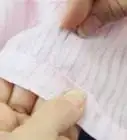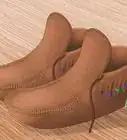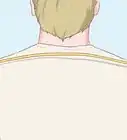wikiHow is a “wiki,” similar to Wikipedia, which means that many of our articles are co-written by multiple authors. To create this article, volunteer authors worked to edit and improve it over time.
This article has been viewed 41,053 times.
Learn more...
Wearing your baby sounds like a strange thing but it is actually a gentle and loving way to keep your baby close to you while still allowing you to be hands free. There are many carriers, slings and baby wraps on the market, but some of them are poorly designed and can cause serious, physical damage to your baby most notably hip dysplasia. Some of these are less comfortable for the adult who is wearing them. Most of these carriers are also very expensive as well. Luckily, you can make your own no-sew baby carrier from some plain t-shirts with only a few minutes of hands on time and no “craft” experience required.
Steps
Making the Carrier
-
1Choose the right t-shirts. What you choose to make your carrier from should depend on personal tastes and what you have available. Obviously a very old t-shirt might be a bit too stretched out to be safe, but one that has been worn a few times should still be perfectly fine.
- Cotton tees are a good choice because they are soft against the baby's skin and they tend to be more breathable. Be aware of your baby's skin, especially if it is very sensitive.
- Try to avoid using the hems of the t-shirts if possible. If you buy new tees be sure to wash them first, especially if they are dark or brightly colored as the dye can transfer.
-
2Pick out your yarn. The yarn that you use should be strong enough to securely hold the loops together, plus support the weight of the baby. A yarn that will not stretch or pill is important for added security.
- You have the option of using other materials such as twine here, but do cover it with something to prevent scratching or irritating the baby's skin.
- You can use an extra scrap of the discarded t-shirt parts to make a cover by simply snipping off a piece, folding it in half so that the raw edges are not showing and then tying it around the yarn or twine. This also can be done for pure aesthetic purposes as well.
Advertisement -
3Gather your supplies. All that you will need for this project are: three t-shirts, one piece of yarn and a pair of scissors. The t-shirts should be pre-washed if they are new and should be in your regular size or perhaps, one size up.
- Do not think that you need to make the carrier too big, because the material will relax slightly and this will make the carrier too large for safety.
-
4Cut all three t-shirts armpit to armpit, directly across. This will give you three fabric tubes. Save the top portions for other projects if you are so inclined.
-
5Take two of the tubes and tie them together in one spot, end to end. If you are standing over top of your workspace you should be looking at two oval (or circular) shapes very close together.
- This is the step where the yarn will come in - gather the yarn around both tubes, going up and through the middle so that when they are tied the two form what will look like a figure eight.
- Tie the yarn several times so that it is very secure and then cut off the excess.
-
6Lay the third fabric tube out flat. With your scissors cut from the top, left hand corner and then diagonally to the bottom right hand corner, but only through the top part of the tube. What you will end up with is a wide piece with two narrow flaps in front.
- This may sound confusing at first, but it is really quite simple. With the tube laid flat you have a top and a bottom part.
- The bottom part will be the part which is laying on the surface you are working from. Only cut the top part diagonally across, cutting from top to bottom.
Wearing the Carrier and Baby
-
1Take the tied loops and put them both over your head. Let them fall to your waist. The tied section should form an X and this part will be on your back to help distribute weight and make the carrier more stable and more comfortable.
-
2Take one loop and place it over your arm and up to your shoulder and then repeat with the other loop to the other side.
- This is one of the reasons that using different colored t-shirts is suggested - this way, you know that you have the blue loop (for instance) on your left shoulder and the red one on the right shoulder.
-
3Place your baby in the carrier. Take the baby and slide him down your chest and then place one leg into each loop. Make sure that both legs are not in the same loop. Once his legs are in the proper place you should spread out the material to give him support and to prevent painful bunching.
-
4Position your baby correctly. While the carrier is a great way to carry your baby, you'll need to be sure that you have positioned him correctly. Until he is six months old or so, you will want the baby to face inward rather than outward to prevent problems with the hip. Follow these positioning tips:
- The baby should appear to be “seated” with his knees coming just above his bottom and comfortably bent.
- You can tell if the baby is in the proper position on your chest if you can bend and kiss his head without strain.
- The baby’s knees should be wide apart instead of forced inward. A good carrier keeps the hips and knees spread and supports the thighs.[1]
-
5Use the third t-shirt piece to secure your baby’s bottom. Take the third t-shirt piece and wrap the widest part (the back side of the tube) around the baby’s bottom and lower back area. Wrap the two flaps around your own waist and tie them securely to help support the baby.
- This will also provide some additional support for your own lower back and should make the carrier much more comfortable to wear.
- Again, spread out the material to prevent bunching. Now you are ready to go with your easy, no-sew baby wrap carrier.
Community Q&A
-
QuestionI don't understand the loops. Can you explain it?
 T. ChinsenTop AnswererThe loops provide the support to hold the baby against the body. They criss cross the back of the body and the baby's legs go into the front part of the loops.
T. ChinsenTop AnswererThe loops provide the support to hold the baby against the body. They criss cross the back of the body and the baby's legs go into the front part of the loops.
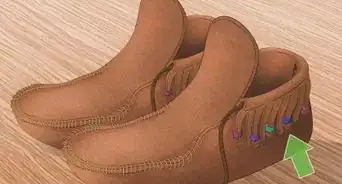
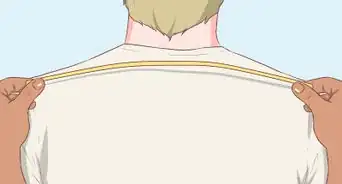
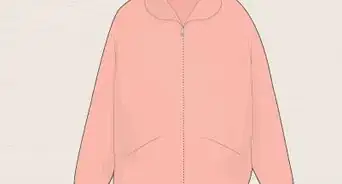
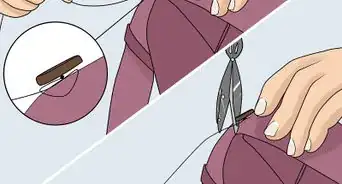
-Step-24-Version-5.webp)

